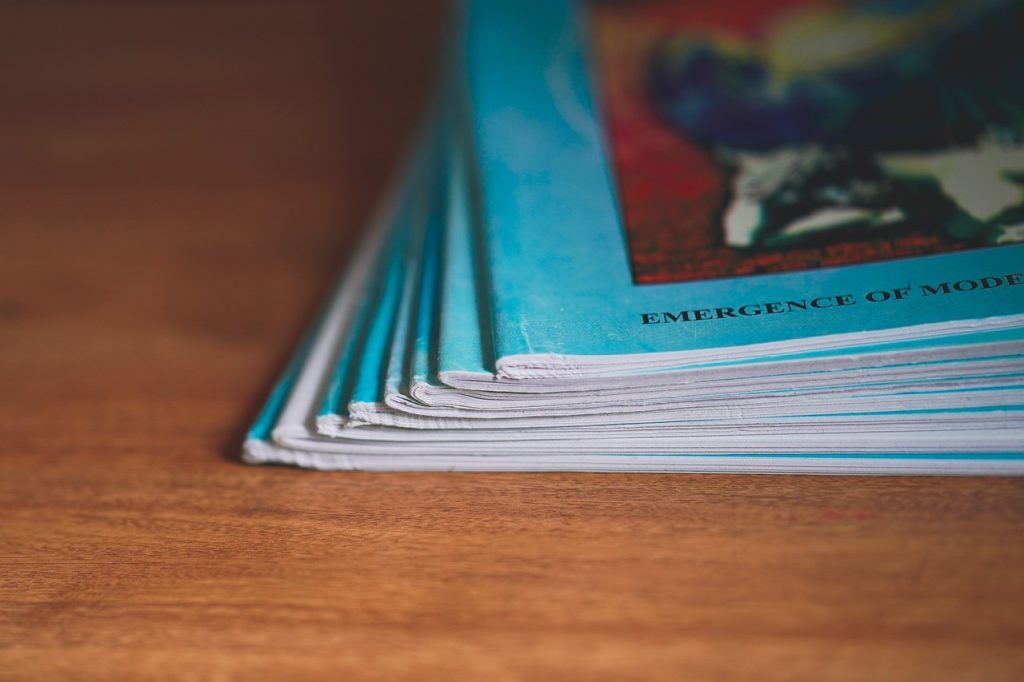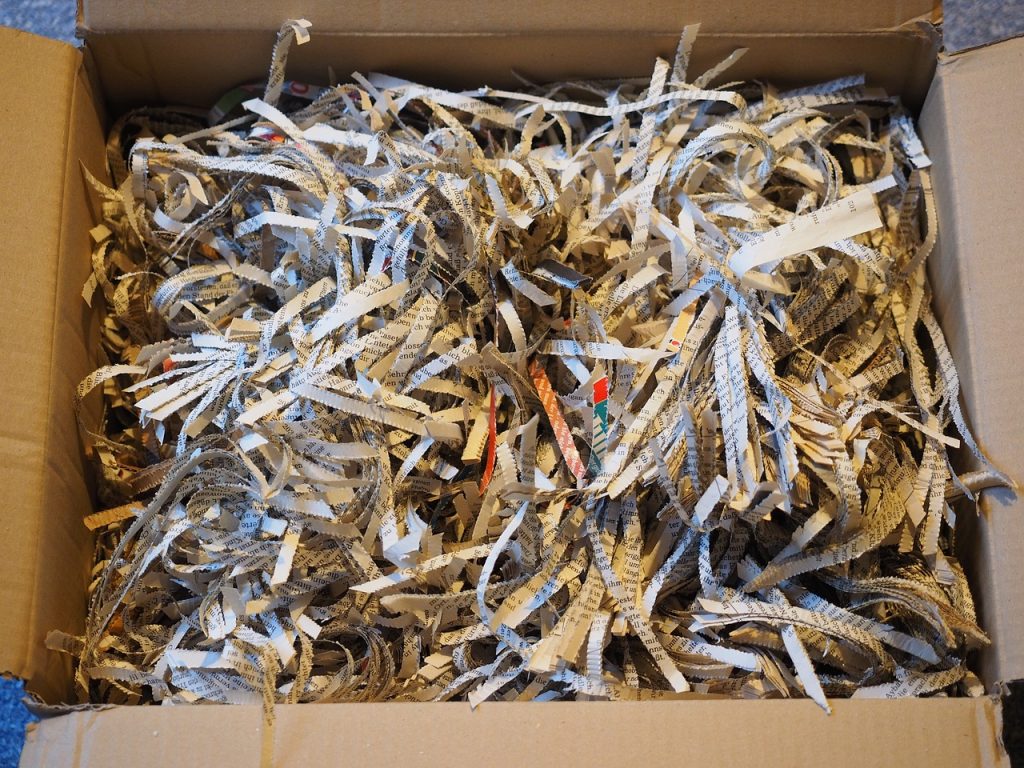- Locate a local recycling facility or center.
- Check the facility’s guidelines on magazine recycling.
- Gather your old magazines.
- Consider selling them online or at a second-hand store.
- Repurpose old magazines into crafts like paper beads or wall art.
- Donate magazines to schools, libraries, hospitals, or art centers.
- Shred and compost magazines as ‘brown materials’ for gardening.
- Ensure magazines are clean and dry before recycling.
- Separate glossy or shiny coated magazines from regular ones.
- Bag magazines properly for city recycling services.
- Use old magazines for DIY projects or donate to churches and charity shops.
How to Recycle Old Magazines: Efficient Ways to Reduce Your Paper Waste
We’ve all got that pile of old magazines that keep adding up over time and before we know it, we’re overwhelmed with paper waste. So, how can we recycle them and what’s the best way to recycle magazines? Let’s take a step towards efficient recycling and break it down!
First things first, we’ve got to find a local recycling facility. This could be a recycling plant or a recycling center in your neighborhood. The quickest way to locate these places is usually via a quick internet search – just type ‘local recycling center’ and voila! You’ve found your way to recycle your old magazines. Keep in mind, though, some facilities may have certain restrictions or guidelines on what can be recycled and how. Therefore, always make sure to check with them first.
Now, simply gather up all your old magazines and prepare to take them to your local recycling facility. If you’d rather get some money out of your old magazines, selling them online or at a second-hand store is another way to recycle your magazines. This way, you’re not only recycling your magazines but also making some extra cash.
Another creative and fun way to recycle magazines is by repurposing them into something new. Here, we’ll share a couple of tips on how to make items from your old magazines. For example, you can create paper beads for necklaces and bracelets, placemats, or even wall art. This way, you’re reducing your paper waste while turning it into something decorative and useful. All these DIY projects allow you to free up some space in your home and also recycle your magazines.
Donating is another great way to recycle your old magazines. Schools, libraries, hospitals, and local art centers could really benefit from these donations. Not only are you recycling your magazines, but you’re also helping your local community. There are also plenty of online platforms where you can post your items for others to take for free, effectively recycling your paper waste.
Lastly, don’t forget about composting! Shredded paper, including magazine paper can be composted as ‘brown materials’. It’s important to shred it first to speed up the composting process. By doing so, you’re turning your old paper waste into something beneficial for your garden.
To sum up, there are several ways to reduce your paper waste and recycle your old magazines. From selling them, donating, to making items out of them or composting, the possibilities are endless. You just need to take that first step towards recycling. Remember that even the smallest step can make a big difference in reducing your paper waste and helping our environment. So why wait? Start recycling your magazines today!
Understanding the Waste Types: Differentiating Recyclable Paper Products
Before you can recycle or otherwise dispose of your paper waste at home, it’s crucial to understand waste types. Not everything you might consider waste is equally recyclable. For instance, mixed paper and plastic are two very distinct types of waste. Mixed paper usually includes paper products like old magazines, newspaper, office paper, and even telephone directories. It is one of the most readily recyclable types of paper waste. On the other hand, plastic waste often proves a little trickier to tackle.
Both plastic and paper waste, if not managed properly, contribute significantly to our local environment’s degradation. Household hazardous waste, in particular, can be incredibly toxic. But thankfully, most of what fills your recycling bin can be recycled. From home, it’s possible to recycle most of these magazines, along with other mixed paper. To recycle these items, just bundle them together to make it easier for waste disposal workers to sort through. But remember, only clean and dry paper products can be recycled. So, don’t just mix in your coffee-soaked newspaper with the rest of your clean mixed paper stash.
Now, let’s talk about the pesky plastic. Yes, it’s true. Plastic is not universally recyclable. Different types of plastic require various methods of recycling, making plastic waste a real challenge to handle. Still, doing your part to accurately sort and recycle plastic is crucial, as it significantly reduces the impact of plastic waste on the environment.
Wondering what to do with old bundles of magazines? Well, these can be recycled too. However, note that if the magazine has a glossy or shiny plastic coating, it should be differentiated from other types of mixed paper. This coating can prevent the paper from breaking down in the recycling process, potentially contaminating other recyclable paper products. That’s why it’s always a good idea to check local recycling guidelines before you send off your waste paper to be recycled.
If you’re feeling a little overwhelmed, don’t fret. Educating yourself on the varying types of waste is a step in the right direction and a beneficial action for the planet.
So, to summarize: understanding the waste types like mixed paper and plastic, along with household hazardous waste, is key in disposing of these items properly. Using correct waste disposal methods, we can reduce the production of waste in our homes and local communities. At the end of the day, it all comes down to doing your bit to recycle, recycle, and yes, recycle some more. This contributes to a greener, cleaner planet, and isn’t that worth an extra few minutes of sorting through your paper waste?
Recycling Books and Magazines: Steps to Recycled Paper Success
If you’ve been wondering how to recycle books and magazines to reduce magazine waste and maintain code compliance, it’s a lot simpler than you might think. With some resource solutions like local recycling facilities, you can turn those old bundles into recycled-paper success! And it’s not just about being environmentally-friendly either, but also about finding unique ways to make good use of paper fibers that would otherwise be wasted.
So, how can you get started with recycling? First off, take note that not all paper objects in your home are recyclable. Next, identify the different types of waste – some can indeed be broken down and reduced into reusable paper fibers, while some others might not make the cut. The accessibility of your local recycling center will also play a big part in your efforts. Before you know it, you’ll be significantly reducing your magazine waste, contributing to the sustainability of our environment.
Getting your hands into the bags of magazine waste and pulling out those old paper copies is the first step. It’s crucial to keep recycling at heart and manage your home’s paper waste. Remember, it’s not just about cleanliness, but about living in code compliance with local waste management rules. Tossing out old magazines as regular trash is simply unacceptable when there are resource solutions available to recycle books and magazines efficiently.
You can clear out old paper from your home and turn it into paper fibers for recycling. It might sound tedious, but it’s not. All you need to do is make sure your local recycling facility can accommodate your magazine waste. The ideal facility should have a system in place to separate paper fibers from other substances in the magazines – the key to generating recycled paper success.
Remember, paper recycling is about more than what you just put into the recycling bags. For the best results, you’ll need to separate magazines and books from other recyclables like glass and plastic. Use one bag specifically for paper-based materials. Opt for a sturdy bag that can handle the weight – a thick trash bag or a high-gallon recycling bag should do.
After sorting, the recycled paper goes through a process to create reusable paper fibers. But it doesn’t stop there! Reclaimed paper fibers can be put back into the manufacturing loop to make more paper products, minimizing the demand for new trees and reducing the carbon footprint of the paper production process.
So next time you are about to toss an old magazine, stop. Think about the possibilities. You can play a part in creating a less wasteful world and contributing to a better future for the environment. Welcome to the world of recycling magazines!
Practical Approaches in Recycling: Turning Your Waste into Worthwhile Products
Magazines are a staple in many homes, and figuring out what to do with the heaps of old bundles can be a bit of a dilemma. It’s not simply about getting rid of waste – it’s about transforming that waste into worthwhile products through recycling. This process is not as complicated as it might seem, and there are practical approaches that can be applied to recycle magazines effortlessly. Your city probably offers recycling services that could be utilized, but before you throw out all your magazines into the recycling bin, it’s important to bag them properly.
Recycling services in the city usually supply a designated bin for paper products, including magazines. These services ease the recycling process for you by picking up recyclable products from your home. It is, however, a good environmental practice to have your magazines bagged before being kept in the bin for recycling. Doing so ensures that these materials are easy to transport and sort when they reach the recycling facility.
Recycled paper products are used in various ways, and some magazines even get a new lease on life as recycled magazines or other paper products. Moreover, the waste recycling services in your city do not just recycle paper. Many also handle other recyclable items, such as batteries, which have to be managed properly. Therefore, it is advisable to utilize these services to help reduce landfill waste.
Beyond using city services, another viable way of recycling magazines at home involves using them in various do-it-yourself projects. Old magazines can be cut, folded, and crafted into decorative items, greeting cards, and even food packaging materials. Even food waste like vegetable peels can be used in compost at home, further boosting your home recycling efforts.
However, donating your magazines is also a commendable option. Several places love to receive old magazines for their patrons to enjoy. One reliable establishment to donate to is a local church. Churches, especially city-based ones, are a great channel to recycle magazines, as these are often put to use in numerous ways, such as Sunday schools or community meetings.
Another place to donate your magazines is a charity shop. Here, your old bundles of magazines are repurposed. They might even be sold to raise funds for charitable causes, thereby turning your waste into valuable products again.
Recycling magazines has loads of benefits. It helps conserve resources, saves energy, reduces the need for landfill space, and reduces pollution. By taking practical approaches in turning your old magazines from waste to worthwhile products, you’re not just cleaning up your home – you’re also doing your part to take care of the environment.




